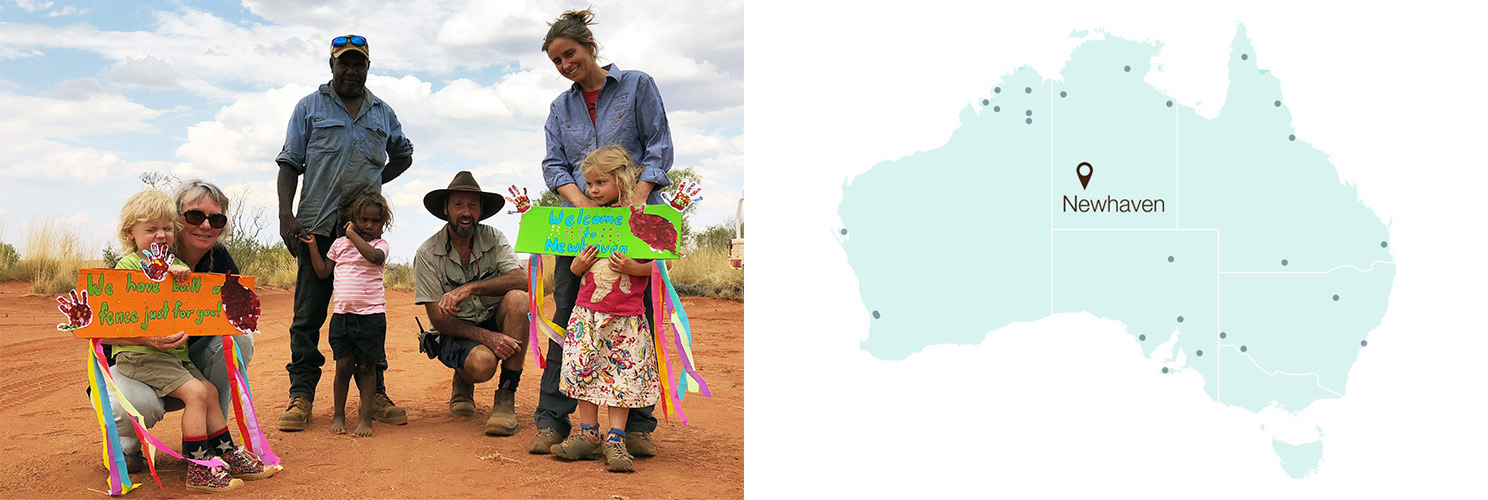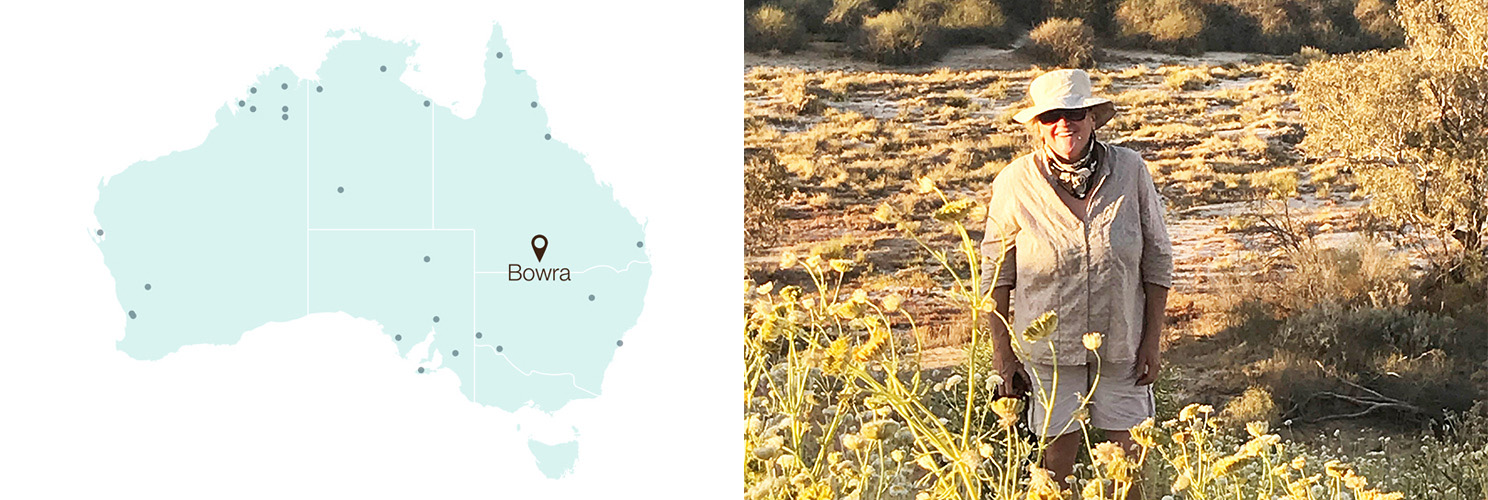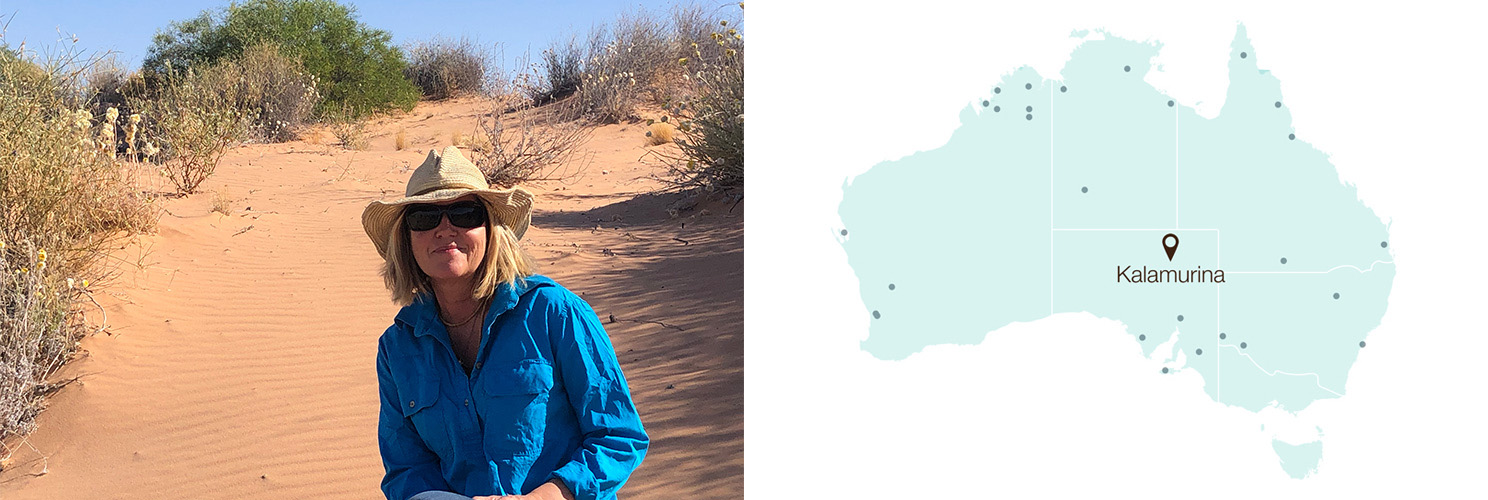On 15 October each year, the United Nations’ International Day of Rural Women celebrates and honours women and girls living in rural areas. It recognises the huge role that rural mothers, daughters and grandmothers play in producing food, and building agricultural and rural development worldwide.
In celebration of UN International Rural Women’s Day, let’s meet a few of AWC’s intrepid female field staff from across the country…

Danae Moore
Alice Springs (NT), National Science Team
“My current role with the AWC is within the National Science team. I am part of a small team responsible for developing the National Conservation Land Management Strategies and assisting with the rollout of the property-level strategies across AWC. I was previously working as an ecologist at Newhaven for 12 years and continue to support the Newhaven program where I can.
It was my childhood dream to work in conservation. I became committed to central Australian conservation whilst working with the Central Land Council within the southern Tanami Desert region.
I would often work at a special place called Lungarta-jarra, 700 km north-west of Alice Springs. The county of Lungarta-jarra was home to heathy populations of Brush-tailed Mulgara, Great Desert Skink and Greater Bilby. The Warlpiri Rangers and I would visit this country to deliver land management (fox control and fire management) and monitor population trends of these threatened species, using traditional tracking skills. The sky at Lungarta-jarra is huge and the smell of hot spinifex amazing. I’ve remained in central Australia and have continued working in conservation maintaining a focus on the integration of conservation science and land management.
Being a woman in conservation in central Australia is wonderful. There are many women in the Northern Territory who live and work in tough and isolated conditions, so you never feel alone.
Becoming a mother has meant that now I need to juggle my commitments to my family and conservation. This continues to be a challenge and is often exhausting. None-the-less, I feel proud when I explain to my children that I work hard to look after country, and I hope that through my example they will value the country they live within also.”
“I currently work with AWC’s Chief Science Officer and the National Science Team to deliver on our major science programs. Prior to that I was a Senior Ecologist and worked on developing a program for measuring and reporting on the health of the AWC sanctuaries.
My favourite part about the job is the difference we make on the ground for wildlife and for the bush. I especially love being part of threatened species reintroductions.

Tess McLaren
Bowra Wildlife Sanctuary (QLD), Assistant Sanctuary Manager
“My role at Bowra Wildlife Sanctuary is in Land Management – things like weed removal and revegetation, infrastructure safety, stability and sustainability, helping with general management and admin of the sanctuary, and working to manage the land with the Country’s Traditional Owners along with AWC’s science team.
I have changed roles dramatically since leaving Kalamurina Wildlife Sanctuary where I worked in visitor management for around 14 years. At Kalamurina we had to develop the entire visitor program from scratch including running it with just two people. Kalamurina is very isolated and in the beginning there was very little visitor infrastructure and guests in their tens of thousands it seemed.
AWC gives me the opportunity to give back to my family and community and to help the native fauna and flora that is so obviously in trouble. It’s the results that make the job so rewarding: seeing the fauna and flora respond and knowing that future generations may get to see that critter or that plant.
I am living the dream: working with my husband, having the ability to grow our own food, meeting critters like Winston the Wedge-tailed Eagle of Kalamurina, and at Bowra, Basil the Bush Stone-curlew, walking with our Country’s Traditional Owners and learning to identify plants and animals and what to eat.
There are definitely perks to living in a remote area – no traffic jams, bright night skies, very odd and spirit-lifting interactions with those that dwell in the Aussie bush and seeing kids enjoying the bush with no devices.”

Annemarie van Doorn
Kalamurina (SA), Assistant Sanctuary Manager
“My current role is Assistant Sanctuary Manager at Kalamurina Wildlife Sanctuary. It is a very diverse role with few dull moments! My job entails general infrastructure maintenance, airstrip maintenance, renovation of the homestead, upgrading and maintaining tracks and campgrounds, giving tours and stakeholder engagement, just to name a few.
I started my career in conservation at a young age, volunteering at wildlife sanctuaries and rehabilitation centres. I finished my undergraduate degree in California and spent a few years volunteering on different conservation projects in South America and the US. I completed a Masters and PhD in Wildlife Ecology and Conservation at the University of Florida and came to Australia to study the Purple-crowned Fairywren in the Victoria River District of the Northern Territory. I was supposed to go back to a job in Florida but loved it so much in the Territory I never left (I also met my partner and had a baby which was a big incentive to stay)!
Before joining AWC, I was working in Nhulunbuy (North East Arnhem Land) with Indigenous organisations providing training in seed collection, native plant propagation, and weed identification and management. My role also included helping establish a commercial nursery that specialises in bush food plants and providing plants to remote Indigenous communities.
There are so many positives when living in remote locations, especially ones as beautiful as Kalamurina and the National Parks I have lived in previously. You have the opportunity to explore some of the most beautiful and unique landscapes in Australia and experience them not just for a weekend but throughout the seasons which is magical.
Another aspect of the work I really love is the diversity. Every day is different and it keeps life very interesting. I would recommend this type of work to other women as it provides a lifestyle that is really special, but also presents challenges that are fantastic learning opportunities. It is also a very social lifestyle. We have made so many friends where we have lived and because of the remote circumstances those bonds can persist over a lifetime.
For me, one of the most challenging things is road access. Unpredictable weather can make roads impassable, and our son is at boarding school a two day drive away. The logistics of getting him here might be a bit of a challenge over the coming years! Communicating with my family in Europe can also be difficult when the comms are not cooperating, but we are working on solutions. I think the key to living remotely (happily) is to expect the unexpected and have a backup plan!”
Interested in a career in conservation?